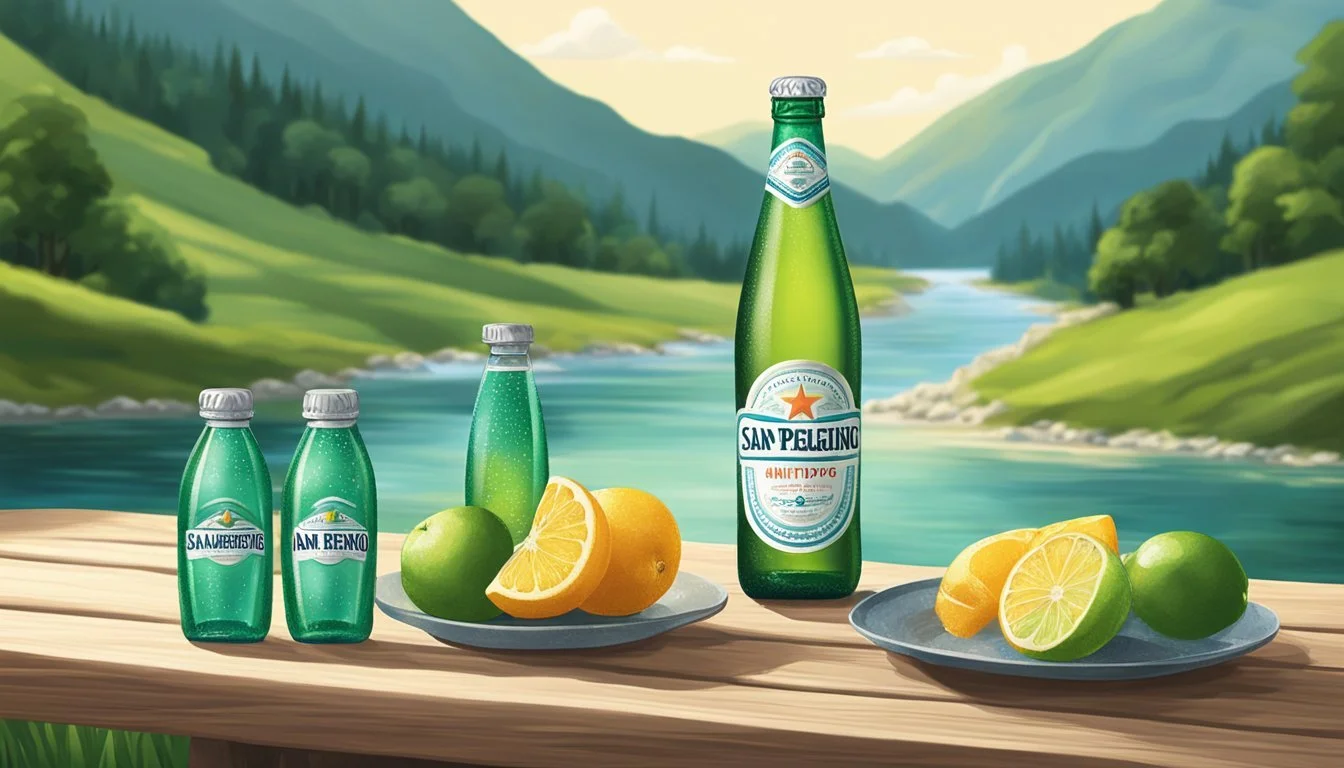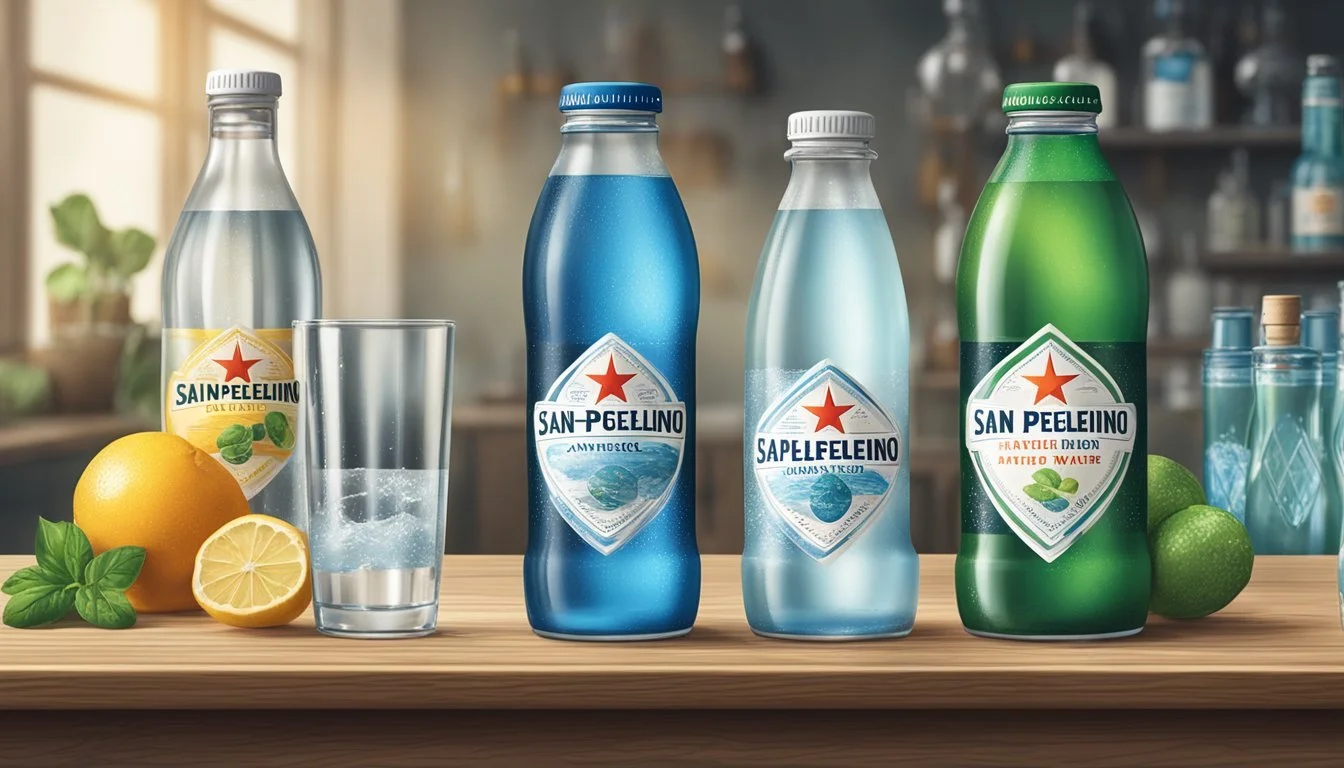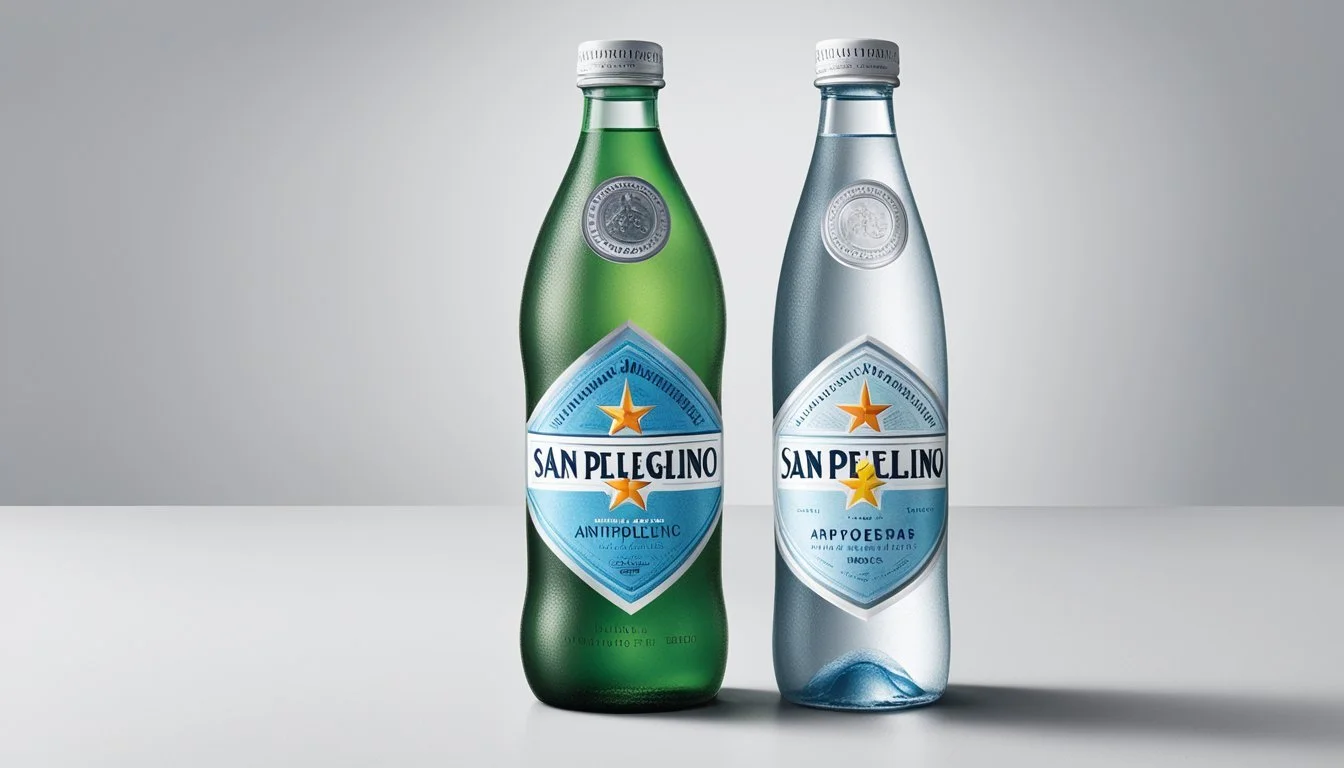San Pellegrino vs. Antipodes
A Comparative Analysis of Premium Bottled Waters
San Pellegrino and Antipodes are two highly regarded bottled water brands, each offering distinct characteristics that cater to different tastes and preferences. Known for its sparkling natural mineral water, San Pellegrino provides a refreshing, slightly tangy experience with a carbonation that appeals to those seeking a fizzy drink. On the other hand, Antipodes water, bottled in tasteful glass, stands out with its pure and clean taste, making it a go-to for those preferring a more neutral flavor profile.
When comparing the two, Antipodes wins in terms of purity and natural taste, while San Pellegrino is favored for its effervescent quality and slight mineral tang. This head-to-head comparison will delve into flavor, packaging, and overall consumer experience, offering a comprehensive understanding of which bottled water might suit your needs better.
Highlighting these differences, this article aims to guide you through the subtle nuances of each brand, helping to determine if San Pellegrino’s sparkling charm or Antipodes' pure simplicity is the right choice for you.
Background on San Pellegrino and Antipodes
San Pellegrino and Antipodes are two prominent bottled water brands, each with unique histories and distinct sources. They offer a taste from their respective regions, reflecting the natural characteristics embedded in their water.
Origin and History
San Pellegrino originated from San Pellegrino Terme in the Italian Alps. The brand dates back to 1899, becoming famous for its mineral-rich sparkling water. Over the years, it has gained a reputation for elegance and quality, often featured in gourmet dining experiences.
Antipodes, on the other hand, hails from New Zealand. Launched in the early 2000s, it is one of the newer players in the bottled water market. Despite its relative youth, Antipodes has quickly garnered attention for its still and sparkling water, celebrated for its purity and subtle taste.
Water Source and Natural Environment
San Pellegrino gets its water from a natural spring in the Italian Alps. The water is naturally enriched with minerals like calcium, magnesium, and potassium as it filters through layers of limestone and volcanic rock. Carbon dioxide is added to create its characteristic bubbles, ensuring a consistent mineral profile and refreshing taste.
Antipodes sources its water from an aquifer located in the Bay of Plenty region of New Zealand. The aquifer lies deep beneath the ground, shielded from contaminants. This pristine environment ensures the water's purity. Antipodes undergoes minimal treatment, preserving its natural mineral content and soft, clean flavor.
Physical and Chemical Properties
San Pellegrino and Antipodes both offer distinctive features that affect their taste, texture, and overall hydration benefits. This section examines their mineral content, pH levels, and carbonation qualities.
Mineral Content Analysis
San Pellegrino is rich in minerals sourced from the Italian Alps. It contains Calcium, Magnesium, Potassium, and Sodium. Specific concentrations include 174 mg/L of Calcium, 53.5 mg/L of Magnesium, and 2.9 mg/L of Potassium. These minerals contribute to its crisp taste and are beneficial for various bodily functions, such as bone health and muscle function.
Antipodes takes a different approach with its New Zealand source. It boasts lower mineral content compared to San Pellegrino, which gives it a subtler taste. It contains select minerals like Calcium and Magnesium but in lower concentrations (109 mg/L Calcium, 15 mg/L Magnesium). These differences make San Pellegrino slightly richer in terms of electrolyte content.
PH Levels and Alkalinity
The pH level of bottled water indicates its alkalinity and how it interacts with the body’s pH balance. San Pellegrino has a pH of around 7.7, making it moderately alkaline. This can be beneficial for neutralizing acids in the body and promoting digestive health.
Antipodes has a more neutral pH level, hovering around 7.0. This balance makes it well-suited for those who prefer a milder water that does not disrupt the body's natural pH balance. Both waters are suitable for everyday consumption, but the slight difference in pH may influence personal preferences based on taste and health benefits.
Carbonation and Bubble Quality
San Pellegrino is known for its carbonation process, which uses carbon dioxide to create a satisfying and refreshing bubble quality. The bubbles are fine and consistent, contributing to its signature mouthfeel. This effervescence helps to enhance the mineral flavors, making it a preferred choice for many sparkling water enthusiasts.
Antipodes, by contrast, offers still water, lacking the carbonation that characterizes San Pellegrino. This makes it a quieter, gentler option without the sharpness that bubbles bring. For those who seek a purely hydrating experience without the tingling sensation of carbonation, Antipodes stands as a suitable choice.
Markdown formatting can help present detailed information clearly, making the content engaging and easy to navigate. The intricate differences in the physical and chemical properties of these waters highlight their unique identities, helping consumers make well-informed decisions based on their preferences.
Health and Hydration
Choosing between San Pellegrino and Antipodes involves considering various health and hydration benefits. This section explores their hydration effectiveness, digestive benefits, and their impact on teeth and bones.
Hydration Factors
Antipodes is known for its high silica content, contributing to its velvety mouthfeel. Silica aids in joint health and improves skin elasticity. Its neutral pH ensures a clean, neutral taste, making it a good daily hydration option.
San Pellegrino, a sparkling natural mineral water, contains balanced levels of calcium and magnesium, enhancing hydration efficiency. The carbonation may encourage one to drink more frequently, assisting hydration. However, those sensitive to carbonation might prefer still water like Antipodes.
Digestive Health Benefits
San Pellegrino features a mineral-rich profile that includes magnesium, crucial for digestive health. Magnesium aids in relieving constipation and maintaining regular bowel movements. The sparkling nature can also stimulate the stomach lining, potentially assisting in better digestion when consumed in moderate amounts.
Antipodes offers a gentle hydration approach with its neutral pH and lower mineral content. This can be beneficial for individuals seeking a milder option that refreshes without causing digestive discomfort. The lack of carbonation also means it's less likely to cause bloating.
Impact on Teeth and Bones
When it comes to teeth and bones, San Pellegrino provides significant calcium content which is essential for bone health. Regular intake can assist in maintaining bone density and dental health. However, the carbonation might pose a risk for those prone to dental erosion if consumed excessively.
Antipodes, being still water, is gentle on the teeth and does not contribute to dental erosion. Its silica content can support bone health indirectly by aiding the assimilation of calcium and other minerals. This makes it a suitable option for those mindful of dental and bone health without the complications of carbonation.
Each water type offers distinct benefits, allowing consumers to choose based on their specific health needs and preferences.
Taste Profile and Culinary Uses
San Pellegrino and Antipodes offer distinct taste profiles and varying culinary applications. The nuances in flavor and effervescence contribute to their roles in pairing with food, wine, and fine dining experiences.
Flavor Profile and Palate
San Pellegrino is known for its crisp and clean taste. It has a subtle mineral profile with a light and delicate essence, appealing to those who prefer a refreshing, effervescent mineral water.
Antipodes, sourced from New Zealand, provides a smooth mouthfeel with a slightly alkaline taste, purer and softer. The low mineral content makes it an excellent choice for those who favor a more neutral flavor.
Both waters cater to different palates, enhancing various dining and drinking experiences.
Pairing with Food and Wine
San Pellegrino pairs excellently with rich and savory dishes due to its distinct mineral essence. It cleanses the palate, increasing the enjoyment of flavors in heavy meats or cheese-laden dishes.
Antipodes, with its neutral profile, pairs well with lighter fare like seafood and salads. Its soft taste enhances the subtleties in food without overwhelming the palate.
Both waters serve as excellent companions to different wine styles, with San Pellegrino matching robust reds and Antipodes complementing crisp whites.
Use in Cocktails and Fine Dining
San Pellegrino's effervescence makes it a favored ingredient in cocktails, adding an elegant fizz. It is a sommelier's choice for its ability to elevate flavors and enhance the overall drinking experience.
Antipodes, with its smooth texture, is perfect for fine dining settings. Its purity makes it an ideal base for mixed drinks, offering a clean slate that does not interfere with other flavors.
In high-end restaurants, both waters showcase their suitability through their distinct qualities, catering to refined tastes and sophisticated culinary applications.
Packaging and Branding
San Pellegrino and Antipodes offer distinctive packaging that reflects their brand identities and values. The bottle design and environmental practices of each brand highlight their commitment to quality and sustainability.
Bottle Design and Materials
San Pellegrino features elegant glass bottles that stand out with their iconic silver and green labels. The design aims to evoke a sense of premium quality and nostalgia, often associated with Italian heritage.
The glass material ensures purity and adds a touch of luxury to the water-drinking experience.
Antipodes also uses glass bottles, but their design is more minimalist and modern. The clear glass showcases the natural appearance of the water, emphasizing clarity and cleanliness. The labeling is subtle, focusing on understated elegance rather than bold visuals.
This design ethos aligns with their brand's emphasis on simplicity and purity.
Environmental Impact and Sustainability
Both brans prioritize environmental sustainability but in different ways. San Pellegrino's glass bottles are recyclable, which aligns with their efforts to minimize environmental impact. They also invest in various sustainability initiatives, aiming to reduce their carbon footprint through eco-friendly practices.
Antipodes takes a more holistic approach to sustainability. Their production processes are carbon-neutral, and they emphasize ethical sourcing and minimal water wastage.
The use of glass bottles, which are both recyclable and reusable, further underscores their commitment to the environment.
Antipodes's branding often highlights these eco-friendly practices, appealing to consumers who prioritize sustainability.
In contrast, San Pellegrino focuses on a blend of tradition, luxury, and environmental responsibility.
Consumer Insights
San Pellegrino and Antipodes are both prominent bottled water brands, each offering unique attributes. This section delves into their market perception, popularity, pricing, and availability.
Market Perception and Popularity
San Pellegrino, known for its Italian heritage, is a staple in many high-end restaurants. This sparkling water's distinctive taste and branding contribute to its premium image. Its effervescence and mineral content are often praised by consumers seeking a sophisticated dining experience.
In contrast, Antipodes boasts a neutral pH and velvety mouthfeel attributed to its silica content. This New Zealand brand is appreciated for its clean, refreshing qualities. Consumers often perceive Antipodes as a healthier option due to its natural, unadulterated sourcing.
Price Comparison and Availability
When it comes to price, San Pellegrino tends to be on the higher end, reflecting its luxurious image and global distribution. It is widely available in both retail stores and online platforms, offering convenience to consumers.
Antipodes, although slightly less expensive, also positions itself as a premium brand. Its distribution is more regional, primarily found in select stores and gourmet shops. This limited availability underscores its exclusivity but may be a downside for some consumers.
Brand Price Range Availability San Pellegrino High Widely Available Antipodes Mid-High Select Stores and Online
These distinct characteristics shape the consumer choices for both San Pellegrino and Antipodes.
More About San Pellegrino
Acqua Panna vs San Pellegrino: Which Bottled Water is Better?
Boxed Water vs San Pellegrino: Which Bottled Water is Better?
Core Hydration vs San Pellegrino: Which Bottled Water is Better?
Ice Mountain vs San Pellegrino: Which Bottled Water is Better?
Icelandic Glacial vs San Pellegrino: Which Bottled Water is Better?
Just Water vs San Pellegrino: Which Bottled Water is Better?
Mountain Valley Spring Water vs San Pellegrino: Which Bottled Water is Better?
Nestle Pure Life vs San Pellegrino: Which Bottled Water is Better?
Poland Spring vs San Pellegrino: Which Bottled Water is Better?
San Pellegrino vs Alkaline88: Which Bottled Water is Better?
San Pellegrino vs Aqua Carpatica: Which Bottled Water is Better?
San Pellegrino vs Cascade Mountain: Which Bottled Water is Better?
San Pellegrino vs Castle Rock: Which Bottled Water is Better?
San Pellegrino vs CBD Living: Which Bottled Water is Better?
San Pellegrino vs Crystal Geyser: Which Bottled Water is Better?
San Pellegrino vs Crystal Lake: Which Bottled Water is Better?
San Pellegrino vs Essence pH10: Which Bottled Water is Better?
San Pellegrino vs Hawaii Volcanic: Which Bottled Water is Better?
San Pellegrino vs Hawaiian Springs: Which Bottled Water is Better?
San Pellegrino vs Kirkland Signature: Which Bottled Water is Better?
San Pellegrino vs Liquid Death: Which Bottled Water is Better?
San Pellegrino vs Open Water: Which Bottled Water is Better?
San Pellegrino vs Proud Source: Which Bottled Water is Better?
San Pellegrino vs Purely Sedona: Which Bottled Water is Better?
San Pellegrino vs Richard's Rainwater: Which Bottled Water is Better?
San Pellegrino vs Simple Truth: Which Bottled Water is Better?
San Pellegrino vs Smartwater: Which Bottled Water is Better?
San Pellegrino vs Solan de Cabras: Which Bottled Water is Better?
San Pellegrino vs Talking Rain AQA: Which Bottled Water is Better?
San Pellegrino vs Topo Chico: Which Bottled Water is Better?
San Pellegrino vs Weird Water: Which Bottled Water is Better?
San Pellegrino vs Whole Foods 365: Which Bottled Water is Better?
San Pellegrino vs Whole Foods Italian Still Mineral water: Which Bottled Water is Better?
San Pellegrino vs Zephyrhills: Which Bottled Water is Better?
More About Antipodes
Antipodes vs Cascade Mountain: Which Bottled Water is Better?
Antipodes vs Hawaii Volcanic: Which Bottled Water is Better?
Antipodes vs Kirkland Signature: Which Bottled Water is Better?
Antipodes vs Richard's Rainwater: Which Bottled Water is Better?
Antipodes vs Solan de Cabras: Which Bottled Water is Better?
Antipodes vs Talking Rain AQA: Which Bottled Water is Better?
Antipodes vs Whole Foods 365: Which Bottled Water is Better?
Antipodes vs Whole Foods Italian Still Mineral water: Which Bottled Water is Better?
Hawaiian Springs vs Antipodes: Which Bottled Water is Better?
Icelandic Glacial vs Antipodes: Which Bottled Water is Better?
Mountain Valley Spring Water vs Antipodes: Which Bottled Water is Better?
Nestle Pure Life vs Antipodes: Which Bottled Water is Better?







